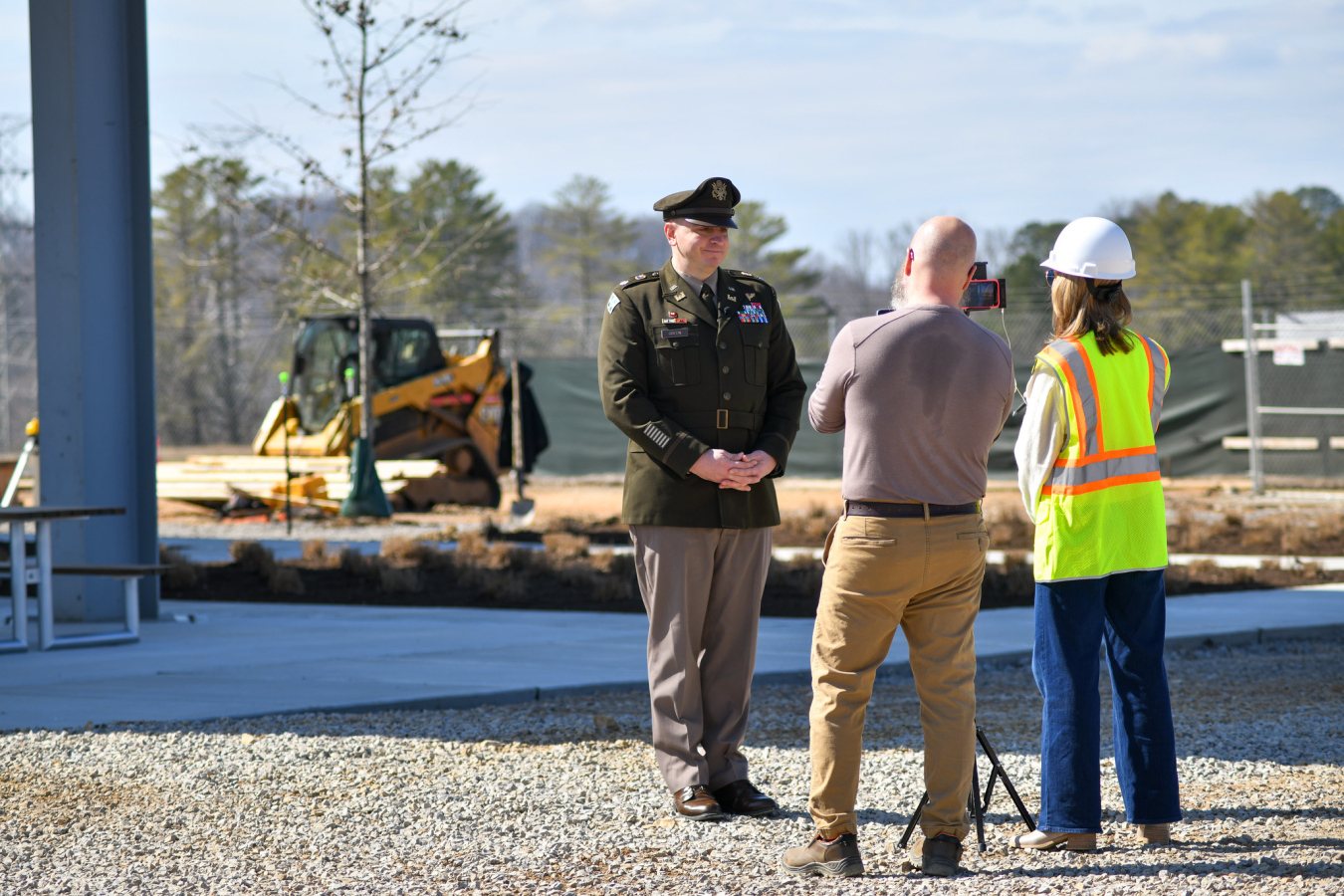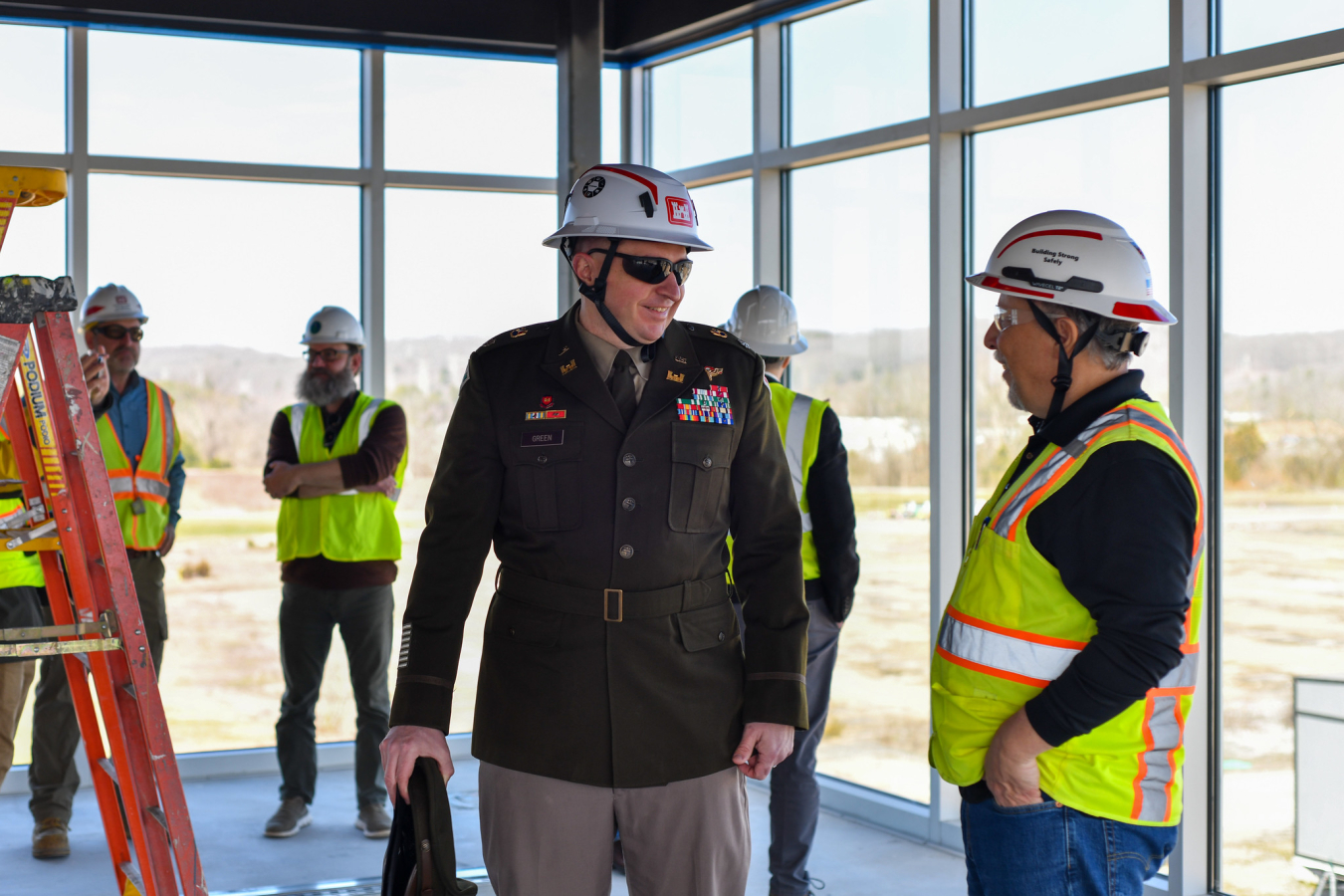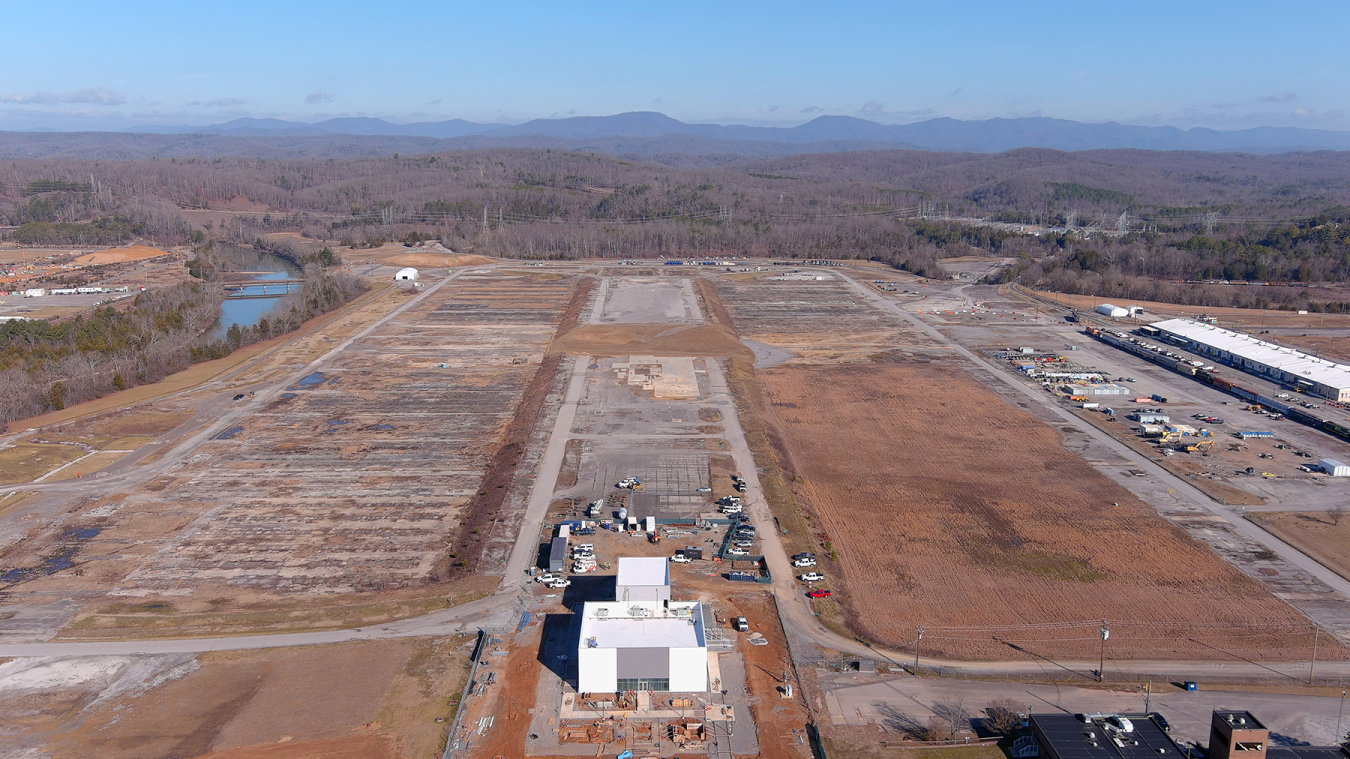Crews have completed construction of the K-25 Interpretive Center through a partnership among the Oak Ridge Office of Environmental Management, U.S. Army Corps of Engineers and contractor Geiger Brothers.
Office of Environmental Management
May 13, 2025The U.S. Army Corps of Engineers and its construction contractor, Geiger Brothers, have completed construction on the K-25 Interpretive Center. The facility will help visitors understand the size and scope of the former Manhattan Project and Cold War-era uranium enrichment complex.
OAK RIDGE, Tenn. — Crews have completed construction of the K-25 Interpretive Center through a partnership among the Oak Ridge Office of Environmental Management (OREM), U.S. Army Corps of Engineers (USACE) and contractor Geiger Brothers.
When the facility opens this summer, it will provide a venue for visitors to visualize the size and scope of the former Manhattan Project and Cold War-era uranium enrichment complex.
The center features an elevated viewing platform with floor-to-ceiling, wraparound glass windows that provide a sweeping, panoramic view of one of World War II’s most historically significant sites.
The K-25 Building was constructed as part of the Manhattan Project and was tasked with enriching uranium for the first nuclear weapon, which helped end the war and positioned Oak Ridge as a world leader in innovation and discovery. The building spanned 44 acres and was the largest in the world at the time of its construction.
Lt. Col. Robert Green, commander of the U.S. Army Corps of Engineers Nashville District, speaks about the significance of the K-25 Interpretive Center project. The agency built the K-25 Gaseous Diffusion Plant, and oversaw construction of the facility dedicated to preserving its history.
Lt. Col. Robert Green, commander of the U.S. Army Corps of Engineers Nashville District, tours the newly constructed K-25 Interpretive Center.
“It's impressive. Visiting this site gives you a sense of the vast footprint of what the facility once was. The historical significance of this place and the scale of the facilities really convey the importance of what used to be here," said Lt. Col. Robert Green, commander of the USACE’s Nashville District.
The project holds particular importance for the USACE because it brings the agency’s involvement there full circle — from building the K-25 Gaseous Diffusion Plant at the start of U.S. involvement in the war to managing construction of the new facility dedicated to preserving its significant history.
The center is one of the final components of a multiproject agreement OREM signed in 2012 as a remedy under the National Historic Preservation Act. The agreement recognizes the importance of commemorating the history of the former Oak Ridge Gaseous Diffusion Plant, where the K-25 Building was located. OREM completed the other elements of the agreement in previous years, including constructing the K-25 History Center and preserving the historic Alexander Inn.
The K-25 Interpretive Center has an elevated viewing platform that provides a sweeping, panoramic view of the K-25 Building’s massive 44-acre footprint.
Uranium enrichment operations ceased at the site in 1985, and it was permanently shut down in 1987. Afterward, the U.S. Department of Energy (DOE) committed to a large-scale environmental cleanup effort to transform the site into a multiuse industrial park to support economic growth in the region. That effort involved tearing down five massive enrichment facilities, including K-25, and 500 other structures that supported operations at the site.
OREM and UCOR completed teardown of the K-25 Building in 2013 and all other demolition at the site in 2020. Additionally, soil remediation at the site wrapped up last year.
The transformed site, now called the East Tennessee Technology Park, already has numerous private businesses onsite, and is emerging as home to the long-awaited American nuclear renaissance, a key DOE priority.
Additionally, the K-25 Building footprint is part of the Manhattan Project National Historical Park, a unit of the National Park Service that also includes Los Alamos, New Mexico, and Hanford, Washington, sites.
“I hope the community appreciates and enjoys this project as much as I do,” Green added. “This is a special place for our country and the region, and I hope they come out and experience it.”
-Contributor: Wayne McKinney
To receive the latest news and updates about the Office of Environmental Management, submit your e-mail address.




